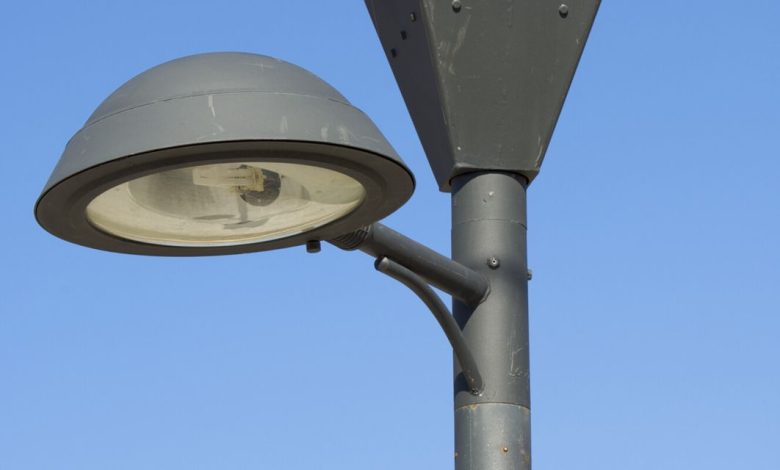How Do Solar-Powered Lights Work

Most of us rely on light bulbs to illuminate our homes and streets. A homeowner turns on a light to read a book or start a late-night snack. Meanwhile, cities light roadways and public parks to protect residents and improve their appeal.
But what happens when the power goes out? Is there an alternative that can provide light when the grid fails?
The answer is yes. Solar powered lights are an excellent choice to light your home and patio. You can also use them in an outdoor garden or even as a safety light while walking in a dark park.
Read on to learn more about how solar-powered lights work.
Solar Cells Technology
Solar powered lights work by converting the energy from the sun into electrical energy that can be stored and used as a power source for lighting. Solar cells, connected in a series, capture and store electrons from the sun’s rays. This energy is then converted into direct current (DC) electricity and stored in a battery.
Once stored, it can be used to power lights, either directly or through the use of a controller. The controller helps to regulate the amount of electricity supplied to the lights, based on the amount of energy stored in the battery. These lights typically offer flexible, efficient, and eco-friendly lighting solutions that do not require any type of connection to a power source.
What is Needed for Installation
Installing solar-powered lights requires a few components. First, you need a photovoltaic panel to absorb the sunlight. Then, you will need a deep cycle battery to store the energy, a charge controller to regulate the battery’s current, and wiring to connect all the components.
You will also need the light fixtures, which contain the light-emitting diodes powered by the deep cycle battery. They provide an efficient and cost-effective way to supply light with an energy source that is free and renewable. For a solar installation company, you can click to read and see if this is the right fit for your solar energy needs.
Parts of a Solar Light System
This type of light is made up of several main components, all of which are necessary for it to operate efficiently. These components are a solar panel, battery, LED light, and voltage regulator.
The solar panel will capture and convert the sun’s rays into electrical energy which is then sent to the battery. The voltage regulator ensures that the battery will store and supply a consistent flow of current to the LED lights.
The LED light then uses the electrical current it receives from the battery to power the lights. This process is then repeated day after day without fail depending on the amount of available sunlight. All of these components work together in harmony to bring reliable solar-powered lighting.
Types and Uses of Solar Lighting
Solar lighting is used in both interior and exterior residential and commercial applications. Solar lights are used for a variety of purposes, from decorative lighting outdoors to lighting a pathway or garden as solar yard lights.
They are also used for security, highway lights, motion sensors, and more. They are extremely energy-efficient and cost-effective, providing an ideal alternative to traditional lighting sources. Some of its uses are:
- Landscape lighting improves patios, decks, and outdoor housing
- Wall lights provide ambient and directed light
- Garden lights illuminate landscaping
- Nighttime pathway lighting protects pedestrians
- Christmas lights, party decorations, and landscaping use string lights
- Street and yard safety lighting, like spotlights
- Pool and deck light illumination
Solar lights are incredibly versatile and can be used in various settings, depending on the user’s needs.
Environmental Benefits
Using solar-powered lights has a lot of environmental benefits. First, it can help conserve energy since solar power comes from the sun, a clean and renewable energy resource, rather than burning fossil fuels. As we know, burning fossil fuels contribute to damaging the environment and emitting harmful emissions into the atmosphere.
Solar lights are also free from power generation, leading to reducing electricity bills, which helps the environment. Solar-powered lights also help to reduce the link to carbon emissions from traditional power generation and help cities meet their emission goals.
They also help preserve natural resources, as they don’t require any water to fuel them. They are easily available, cost-effective, and last for a long time. All of these benefits can help the environment by reducing the damage to the environment, decreasing the consumption of energy, preserving natural resources, and reducing emissions.
Possible Drawbacks
The cost of setting up solar lights can be quite expensive, and the initial investment isn’t always justified. Their efficiency also depends on the amount of sunlight available. Sometimes, the lights may fail to turn on if the battery is unable to hold a charge.
Also, solar-powered lights require frequent cleaning—they tend to accumulate dust, dirt, and bird droppings over time. Most solar lights cannot compete with the amount of light created by more traditional lights. While solar-powered lights have many advantages, it’s important to consider the drawbacks before investing.
Solar Powered Lights Are the Perfect Energy Savers
Solar powered lights are an effective energy-saving solution. They produce zero emissions, are easy to install, and require minimal maintenance. By taking advantage of renewable energy sources, the use of solar-powered lights can help reduce our reliance on finite fossil fuels.
Make the switch to solar-powered lights today to begin reaping the benefits of renewable energy.
For more interesting reading, check out our blog! We love to discuss the latest trends and topics, so you can explore even more ideas.




